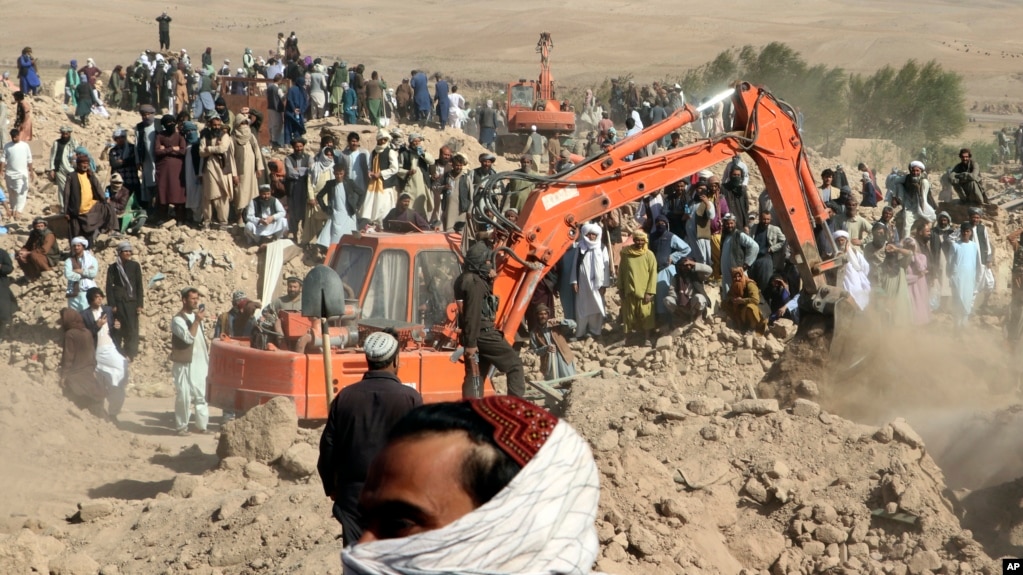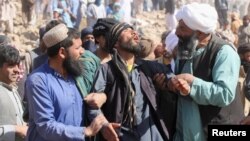
Aid workers have reached some earthquake-stricken areas of western Afghanistan and started distributing emergency food supplies to those affected as rescue efforts continued after a series of powerful earthquakes caused widespread destruction and reportedly killed more than 2,000 people in the quake-prone mountainous country’s worst natural disaster in years.
Wahid Amani, a spokesman for the United Nations’ World Food Program (WFP) has told RFE/RL that emergency aid has been delivered to several hundred people in Herat Province so far.
“We are prepared to deliver emergency food aid to some 20,000 people” Amani said, adding that the UN food agency was ready to increase that number to 70,000 people.
In addition to the WFP, teams from the UN’s World Health Organization (WHO) have rushed to the areas of Herat worst affected by the temblors. WHO employees are already in the field helping with the efforts to rescue and treat people still under the rubble, the Afghan branch of the WHO told RFE/RL.
The WHO has put the number of those affected to more than 11,000 people.
Alaa Abouzeid, the head of the WHO’s emergency response in Afghanistan, said women and children make up about two-thirds of those hospitalized.
“Two-thirds of those with severe injuries who are admitted in the hospital I saw yesterday [in Herat] are children and women,” Abouzeid told Reuters.
Volunteers have transported truckloads of food, tents, and blankets to the worst-stricken areas some 30 kilometers northwest of Herat city, capital of the same-named province.
The rugged area is difficult to reach, and local officials have given conflicting casualty tolls from the earthquake.
On October 8, a member of the Taliban-led government said the updated death toll had surpassed 2,000.
Mullah Janan Sayeeq, a spokesman for the Ministry of Disasters, told a news conference that 2,440 people were dead, about 10,000 were injured, and that more than 2,000 houses had been damaged or destroyed.
Afghanistan’s disaster agency said on October 8 that 2,053 people had been killed.
Neither estimate could not be independently confirmed.
The epicenter of the first earthquake was some 40 kilometers northwest of Herat, which has some 700,000 people in the city and the surrounding area. It was followed by at least three major aftershocks.
The U.S. Geological Survey recorded the largest of the temblors at a magnitude of 6.3, with the latest aftershock coming about 30 kilometers northeast of the city of Zindah Jan, which has a population of about 70,000 people.
“This earthquake was preceded by a 6.3 earthquake that occurred approximately 30 minutes before,” the USGS said.
Disaster authority spokesperson Mohammad Abdullah Jan said four villages in the Zindah Jan district in Herat Province bore the brunt of the quake and aftershocks.

